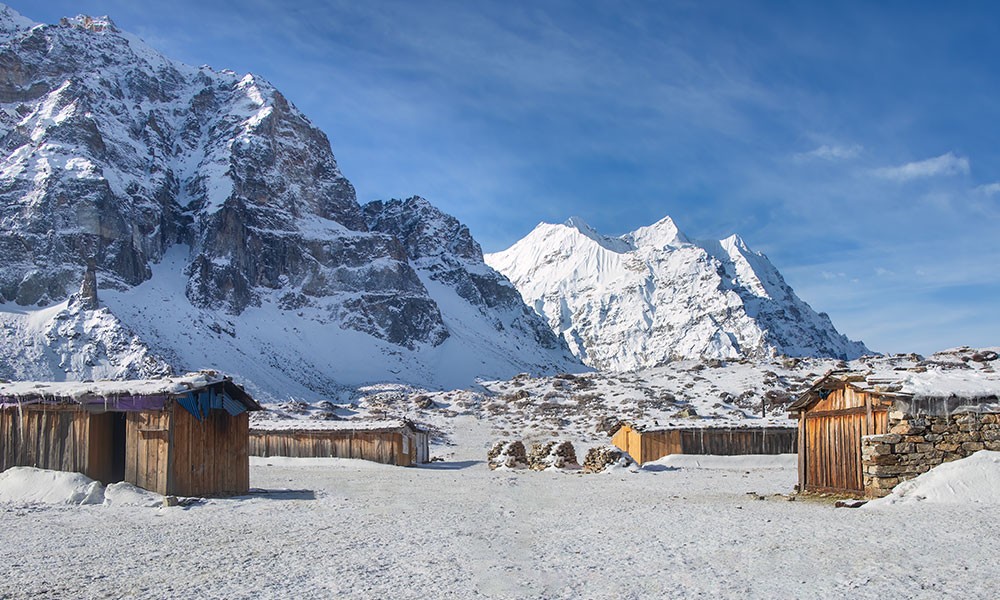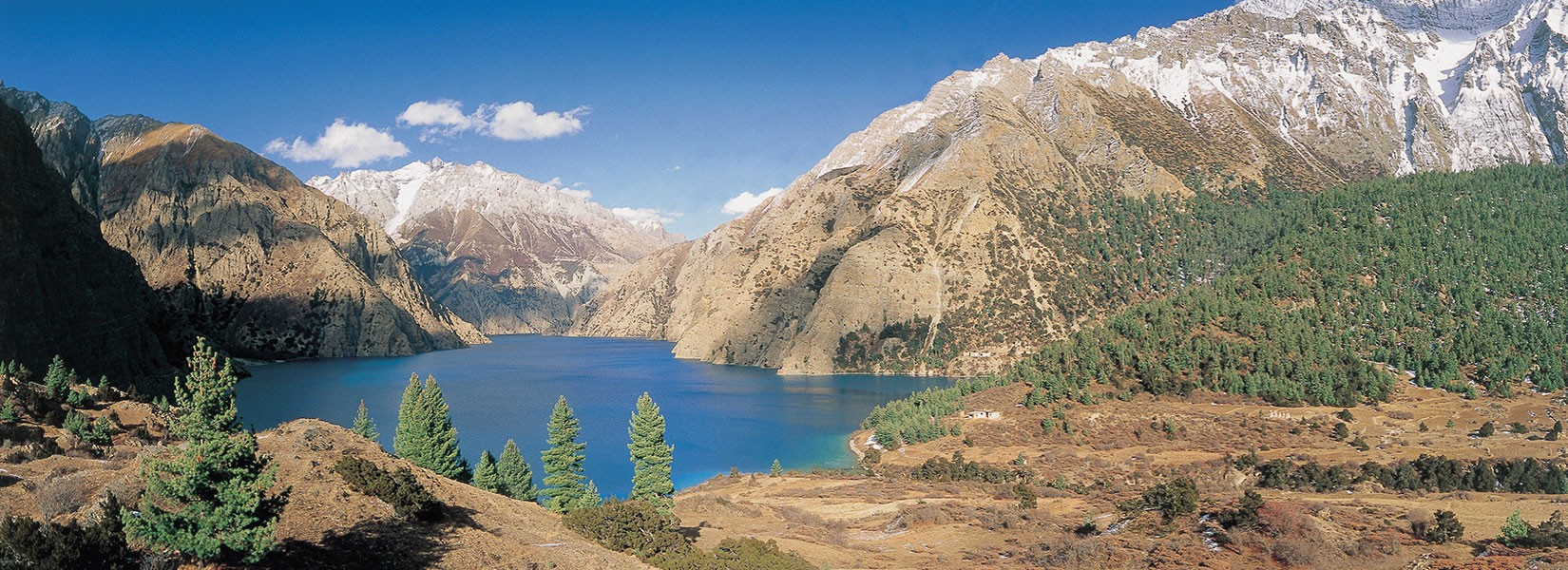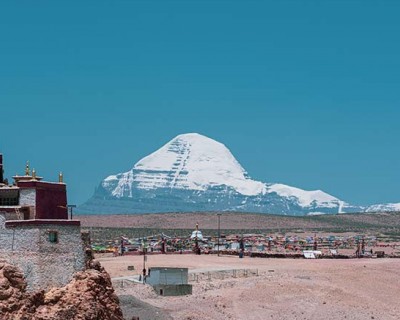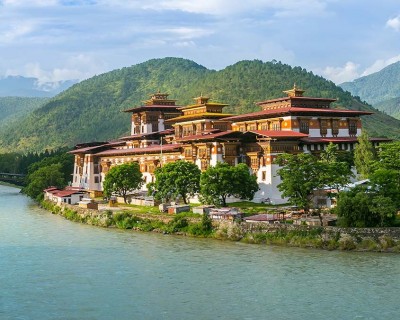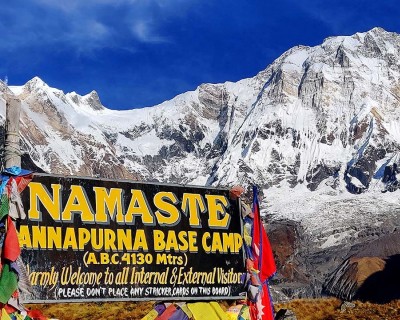Less Crowded Treks in Nepal - General Trek Details
Kanchenjunga Trek
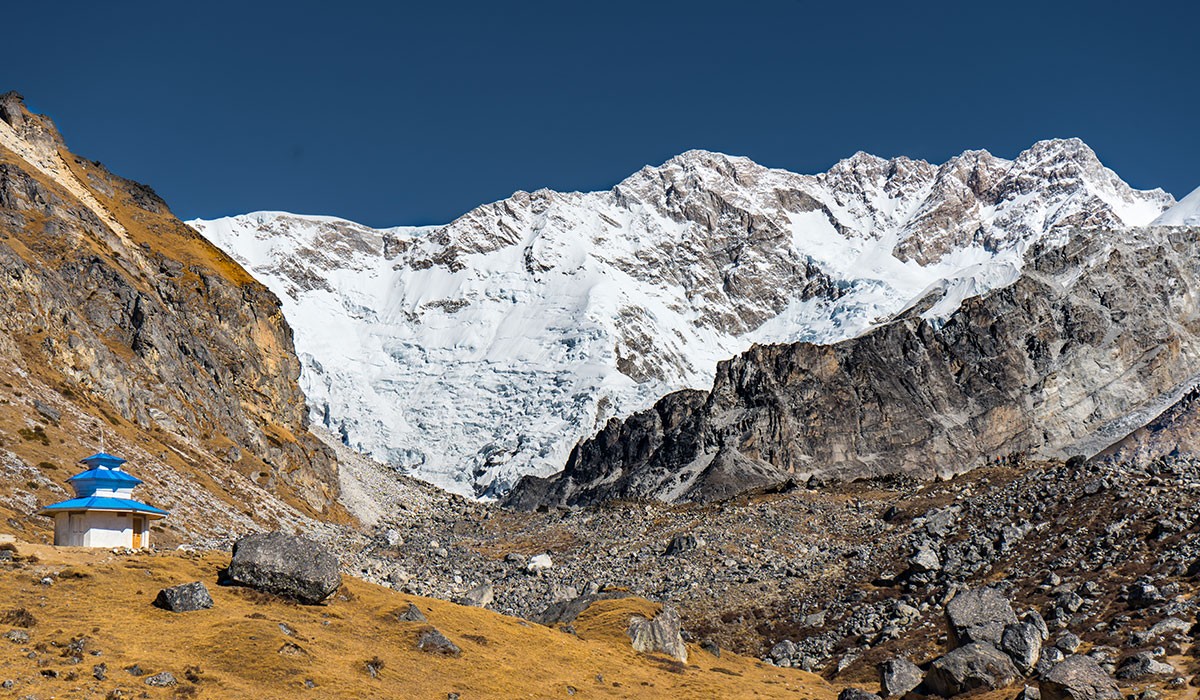
Kanchenjunga Trek is the ultimate off-beaten trek opportunity in the Nepali Himalayas. If you are looking for an incredible trekking experience with excitement on par with mainstream trekking adventures, this is one of the best, less crowded treks in Nepal. Kanchenjunga Trek takes you away from the mainstream crowd to the isolated regions in the far-eastern Himalayas. During this exciting endeavor, you will have the opportunity to experience th impeccable Himalayan wilderness. Stunning natural beauty, breathtaking mountain views, and you will also get the opportunity to experience the beautiful culture-traditions of the high Himalayan settlements that are thriving in the shadows of the towering peaks.
Unlike other trekking adventures in Nepal, which are mostly about two weeks, the Kanchenjunga Trek is one of the extensive explorations that can generally last about 18 to 26 days. So, this exciting trek is also a perfect opportunity to take a short-rejuvenating break from the hustle and bustle of modern life and embrace the Himalayas to reboot the system. In this journey, you will also explore the restricted area in the region as well as the Kanchenjunga Conservation Area.
General Kanchenjunga Trek Itinerary Overview
Your journey in this less crowded treks in Nepal starts with an exhilarating flight from Kathmandu (1,400 meters) to Bhadrapur (94 meters). Driving to Phidim (1,365 meters) to Taplejung (1,820 meters), you will then begin your trekking journey to Sinuwa (980 meters). You will then continue exploring the winding trail of Kanchenjunga and pass charming traditional villages along the trail like Tapethok (1,380 meters), Amjilosa (2,310 meters), Gyabla (2,730 meters) and Ghunsa (3,595 meters). After enjoying acclimatization at the Ghunsa Village, you will then follow the high-altitude trails of the alpine zone across Khambachen (4,000 meters) and Lhonak (4,780 meters) to finally reach the Kanchenjunga North Base Camp (5,065 meters) which is also known as Pang Pema.
You will then take your time to admire the beauty of the third-highest peak in the world from its base before making a return to Lhonak. Continuing with the descending trail, you will then head to Phaley (3,240 meters) across Khambachen and rejoin the main route at Amjilosa. Trekking down to Taplejung on the same route across Tapethok and Sinuwa, you will drive down to Bhadrapur for the return flight to Kathmandu.
Pikey Peak Trek
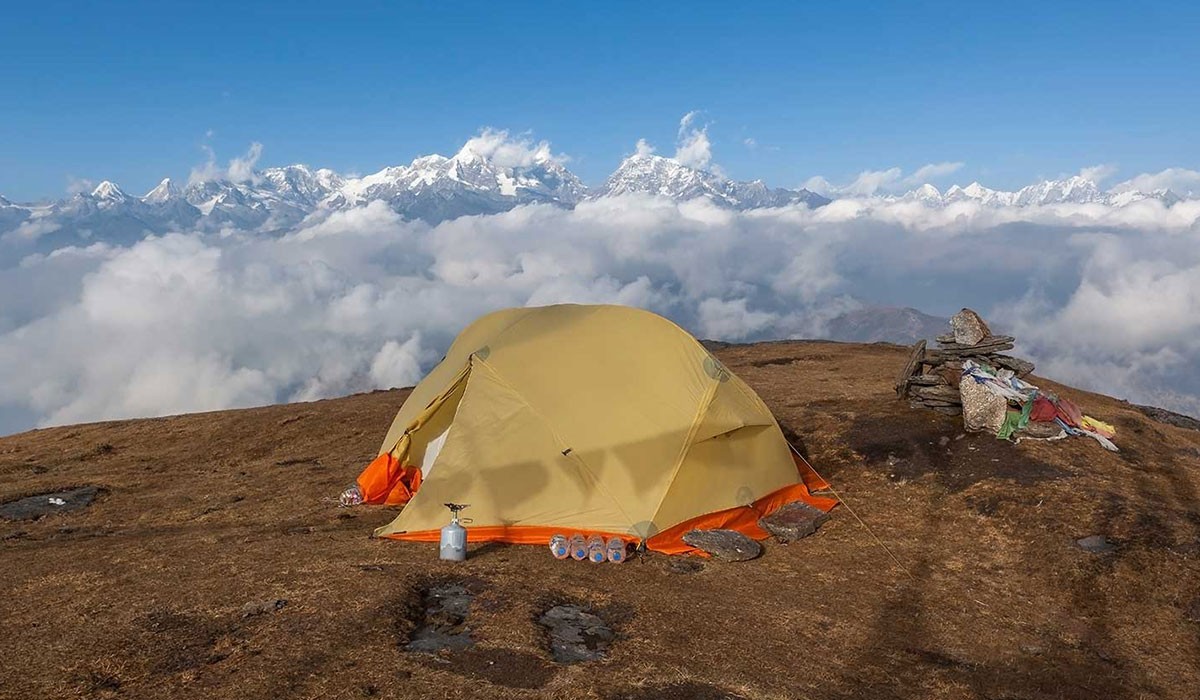
Pikey Peak Trek is another favorite trekking adventure in the less crowded treks in Nepal category. This is a newly introduced trekking in the eastern Himalayas that takes you to the lower Khumbu region; it is short as well as one of the easiest trekking options in Nepal that doesn’t take you to significant altitudes. The summit of Pikey Peak is just at an elevation of 4,065 meters (13,336 feet), which is just slightly above the alpine zone. So, even though the experience is quite remarkable as you get to move across the exciting trail in a tranquil setting, the journey isn’t that physically demanding.
This exciting peak in the lower Everest region was also the most preferred spot of the legendary mountaineer Sir Edmund Hillary to enjoy the breathtaking views of Mt. Everest. Hillary used to consider this peak as the ideal viewpoint to relish the true magnificence of Everest and other surrounding peaks. From the summit of this exciting trekking peak, you will be able to catch the magnificent views of the giant 8,000-meter class mountains like Everest, Cho Oyu, Lhotse, Makalu, Kanchenjunga, and Manaslu, including the incredible vistas of other 6,000 and 7,000 meter peaks. The Pikey Peak Trek trail also takes you through the exhilarating cultural settlements of the Tamang, Rai, Limbu, Sherpa, and Chhetri ethnic groups.
So, overall, this short and easy trekking route is one of the best, less crowded treks in Nepal if you are looking for both culturally and naturally enticing adventure in a short frame. You will also get the opportunity to explore the Sagarmatha National Park, which was enlisted as a UNESCO World Heritage Site in 1979.
General Pikey Peak Trek Itinerary Overview
Your exciting adventures in this short Himalayan trek start with a drive from Kathmandu (1,400 meters) to Dhap Bazaar (2,932 meters). In the mainstream Everest Base Camp Trek, the upper part of the Khumbu region, the journey would generally start with a scenic flight from Kathmandu to Lukla (2,800 meters). From Dhap, you will begin your trek toward the Jhapre Village (2,830 meters), and the next part of your journey will bring you to the base of this trekking peak, Pikey Peak Base Camp (3,640 meters).
Then, climbing to the top of Pikey Peak (4,065 meters) and relishing the wonderful vistas of mountain peaks and valleys, you will make descend to Kande Village (3,739 meters). Moving along with your descending route after completing your Himalayan journey, you will trek to Phaplu (2,413 meters) across Junbensi (2,700 meters). You will then drive back to Kathmandu on the banks of the Sun Koshi River, which will mark the end of his short Himalayan endeavor.
Gain Insights On:
Upper Dolpo Trek
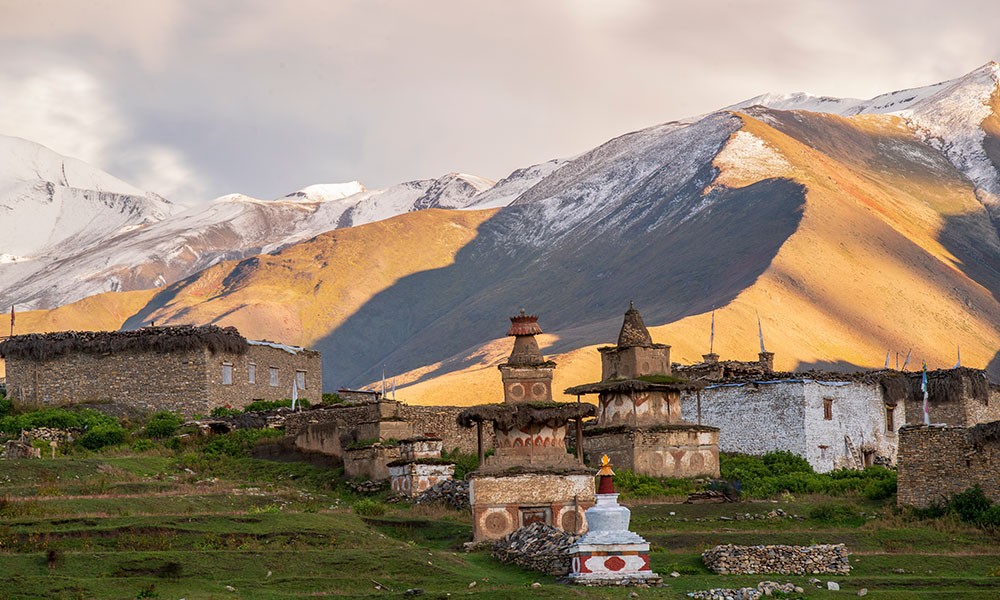
Upper Dolpo Trek is one the fascinating and iconic ventures in the mid-western part of the country. Due to its remoteness and long duration, this is one of the less crowded treks in Nepal that receives a very low number of trekkers. The Upper Dolpo region is also one of the restricted trekking areas and was only opened to tourists in 1989. This remarkable Himalayan odyssey takes you across the trails between the ranges of Dhaulagiri massif and the scenic Tibetan plateaus. Your venture in this off-beaten trail of the western Himalayas will take you through the Shey Phoksundo National Park, the largest national park in the country, which is situated at the trans-Himalayan altitude.
The Upper Dolpo Trek is also famous for the thrilling passes in its tranquil route. So, if you are looking for a bit of a challenge and want to conquer several Himalayan passes in a single itinerary, this will be an ideal choice among the less-crowded treks in Nepal for you. During the Upper Dolpo Trek, one of the less traversed regions in the country, you will get the opportunity to experience the raw wilderness of the region and the beautiful culture that is massively influenced by Tibetan Buddhism. Chhetri, Magar, and Dolpa Pa (the natives of the Upper Dolpo region who are geographically Nepali but culturally Tibetan) are the major inhabitants of this remote region, and you will get a chance to experience their fascinating cultures-traditions passed down for generations.
General Upper Dolpo Trek Itinerary Overview
This remote trekking journey is slightly more extensive than other trekking journeys in Nepal and starts with the Kathmandu (1,400 meters) to Nepalgunj (150 meters) flight. You will take another flight heading toward Jhupal (2,475 meters) and drive to Dunai (2,140 meters) before commencing the trekking part. Entering the Shey Phoksundo Valley on the third day, you will move along the peaceful route, trekking across Chekpa Village (2,838 meters) and Samdua Village (2,960 meters) before reaching the Shey Phoksundo Lake (3,630 meters). After taking time to explore this sacred lake that changes color depending on the season, you will make your way toward Phoksundo Khola (3,750 meters).
Then, trekking past the Phoksundo Bhanjyang (4,717 meters), you will cross Kanga La Pass (5,350 meters) to reach Shey Gompa (4,160 meters). A rest day here will follow the trails over another pass, Sela La Pass (5,094 meters), to reach Namgung (4,608 meters). Proceeding further on the serene trails, you will cross the traditional settlements of Saldang (3,770 meters), Cha Gaon (4,910 meters) and Dachu Khola (4,700 meters) before climbing over Jyanta La Pass (5,220 meters) to reach Phedi (4,900 meters). You will then take on the final pass of this off-beaten route, Jeng La Pass (5,090 meters), to reach Tokyu Gaon (4,209 meters).
After reaching Tokyu, you will then continue descending further to Ghyamgar (3,759 meters) across Dho Tarap (3,944 meters) and trek down to Tarap Khola (3,652 meters). During the final section, you will descend to Dunai via Tarakot (2,540 meters) and drive to Jhupal. The flight from Jhupal to Nepalgunj to Kathmandu will then finally be a full curtain to your long-haul exploration of the isolated part of the mid-west Himalayas.
Upper Mustang Trek
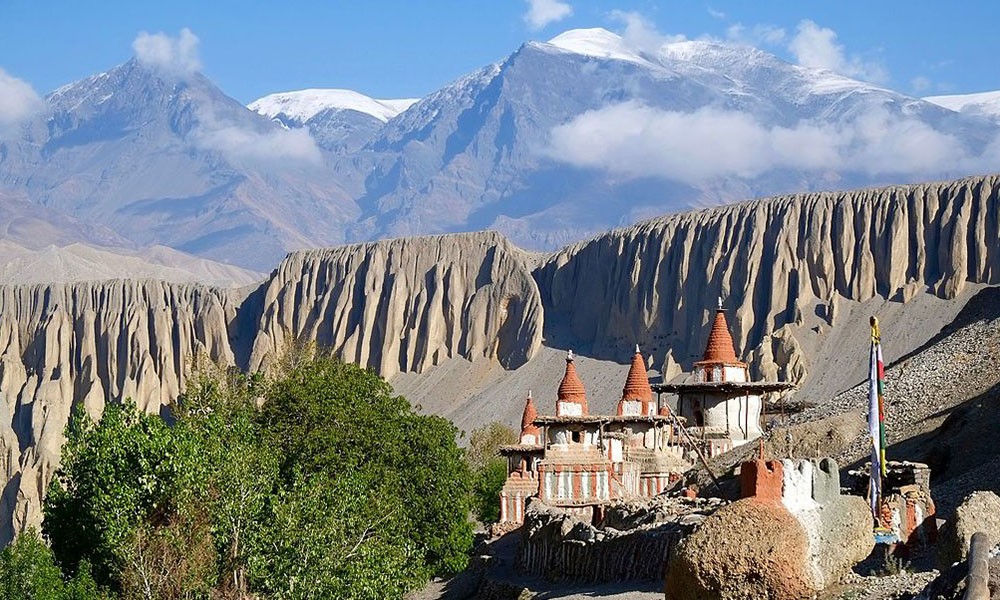
Pretty much every trekking enthusiast has heard about the second mainstream trekking region in the country of the Himalayas, the Annapurna region. This central part of the country is popular for its enchanting natural beauty and incredible cultural experience. Upper Mustang Trek, which is located in this popular mainstream trek destination, may seem like a crowded trekking adventure. However, it is not true; the Upper Mustang region, which is also popular as ‘The Forbidden Kingdom’ and ‘Kingdom of Lo’ was opened for tourism only in 1992. So, its complete isolation from the world has helped the region preserve its unique culture-traditions, natural beauty, and history.
Upper Mustang Trek, one of the fascinating, less crowded treks in Nepal, will provide you with the opportunity to understand the depths of the Bon Religion (connected with the Tibetan Buddhism practice) and the ancient settlements situated at the cliffs of the mountain. This higher-altitude part of the Annapurna region is also famous for its desert-like landscape and the caves that are carved in the cliffs, which are considered to be mementos of the ancient civilization. Besides the isolated part of the Himalayas, this trek will also provide you the opportunity to relish the highlights of the mainstream route and Annapurna Conservation Area, which houses the deepest river valley, Kali Gandaki.
General Upper Mustang Trek Itinerary Overview
Despite its iconic raw wilderness exploration, the Upper Mustang Trek has a short trekking itinerary. After driving to the tourist country, Pokhara (820 meters), you take a flight toward Jomsom (2,743 meters), and during the first part of the trek, follow the route toward Kagbeni (2,800 meters). Moving along the bank of Kali Gandaki River, you will then head toward Chele Village (3,050 meters) before entering the atmosphere dominated by Tibetan Buddhism, Syangbochen (3,475 meters). Then, the next part of your journey will take you across high-altitude serene sections of the Upper Mustang region like Ghaymi (3,520 meters), Charang (3,560 meters), and Lo-Manthang (3,840 meters), the ancient forbidden kingdom.
After enjoying an exploration day at Lo-Manthang, you will head toward Dhamkar (3,820 meters), and you will then retrace your steps back to Syangbochen. Then, you will trek down to Jomsom Bazaar across Chussang (2,980 meters), from where you will fly back to Pokhara. You will enjoy your leisure time at this tourist hub before driving back to Kathmandu.
Makalu Base Camp
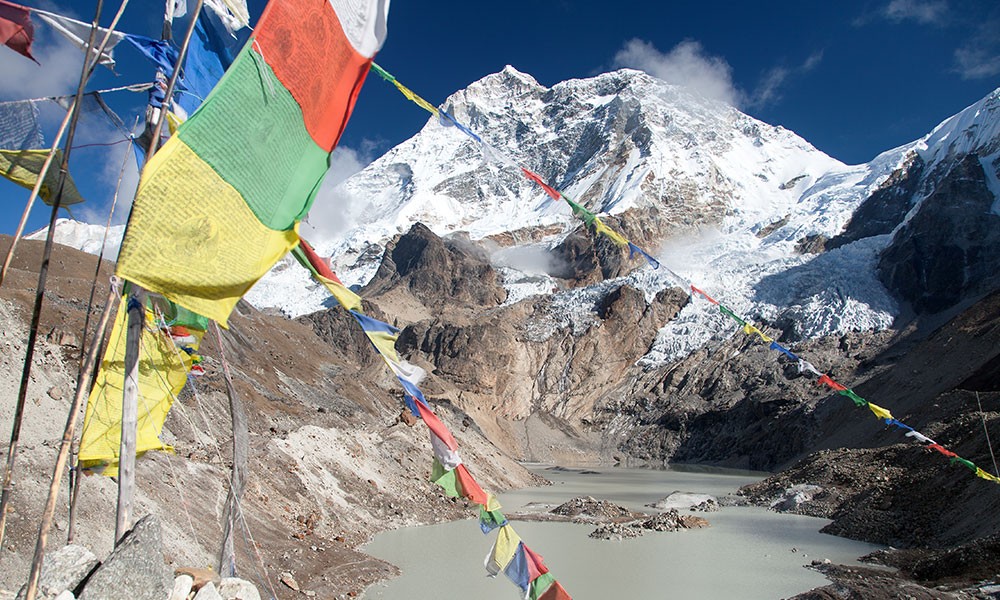 Makalu Base Camp is another thrilling, less crowded treks in Nepal that takes you to the remote part of the north-eastern Himalayas. This off-beaten trekking adventure is a fascinating combination of stunning natural beauty and remarkable cultural immersion. Trekking across the appealing traits adorned by the Himalayan wilderness, you pass the traditional Rai, Limbu, Tamang, and Sherpa settlements to reach the base of the fifth-highest peak on the planet, Mt. Makalu (8,485 meters). In comparison to other less crowded treks in Nepal, Makalu Base Camp Trek is considered one of the physically demanding endeavors due to its complete isolation and rugged terrain.
Makalu Base Camp is another thrilling, less crowded treks in Nepal that takes you to the remote part of the north-eastern Himalayas. This off-beaten trekking adventure is a fascinating combination of stunning natural beauty and remarkable cultural immersion. Trekking across the appealing traits adorned by the Himalayan wilderness, you pass the traditional Rai, Limbu, Tamang, and Sherpa settlements to reach the base of the fifth-highest peak on the planet, Mt. Makalu (8,485 meters). In comparison to other less crowded treks in Nepal, Makalu Base Camp Trek is considered one of the physically demanding endeavors due to its complete isolation and rugged terrain.
As this region is pretty close to the Nepal and Tibetan border, you will mostly witness the Tibetan Buddhist culture and lifestyle of the natives derived from the peaceful religion. You will get the opportunity to relish the spiritual ambiance of the high Himalayas in the trails decorated with praying flags, mani walls, chortens, and gompas. This wonderful northeastern Himalayan exploration also explores the Solukhumbu Valley, which is part of the popular mainstream trekking destination, Khumbu Valley. Besides that, in this remote trek, you will get the opportunity to explore the tremendous diversity of the Makalu Barun National Park, which was established in 1992.
General Makalu Base Camp Trek Itinerary Overview
Your trek in this remote part of the eastern Himalayan region will start after a flight from Kathmandu (1,400 meters) to Tumlingtar (950 meters). For the next part, you will drive to Num (1,500 meters) before stating your trek toward Seduwa (1,493 meters). Gradually following the winding trail, you will trek past Tashi Gaon (2,200 meters), Khoma Danda (3,500 meters), Mumbuk (3,400 meters), Nehe Kharka (3,750 meters) and Sherson (4,600 meters) to reach Makalu Base Camp (4,870 meters). After taking a whole day to immerse in the magnificence of the fifth-highest peak on the planet, you will then start your downhill trek to Yangle Kharka (3,557 meters).
Then, trekking down to Khoma Danda via Mumbuk (3,400 meters), you will also cross the Tutu La Pass and Shipton Las Pass which are known for the majestic views of the mountains and valleys. Continuing with the downhill trail, you will cross Tashi Gaon and Seduwa to reach Num. After driving back to Tumlingtar, you will then take a flight back to Kathmandu, ending your journey on a high note and enjoying the epic aerial views of Himalayan peaks.
Manaslu With Tsum Valley
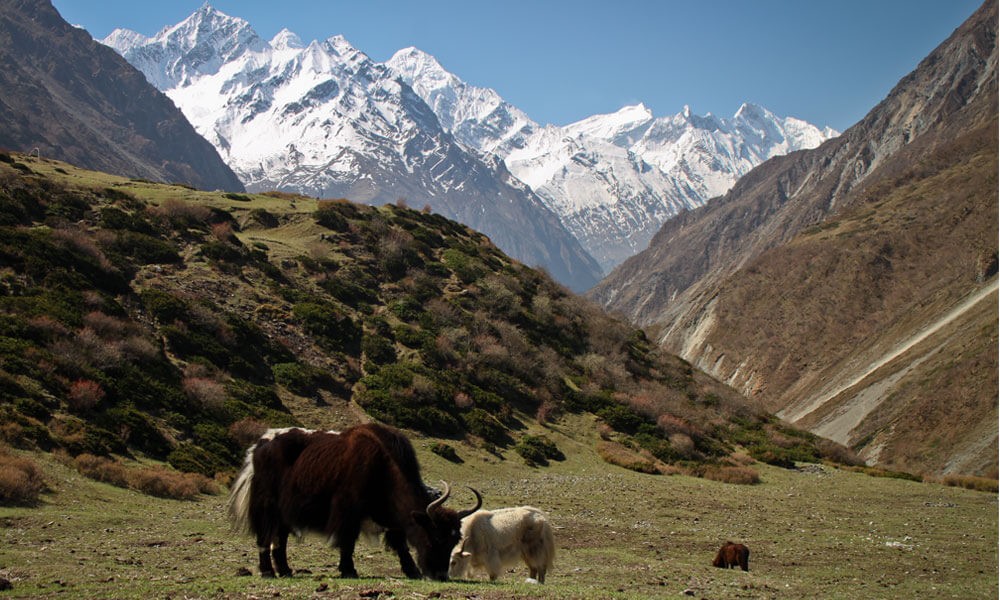
You might have come across the Manaslu Circuit Trek while surfing for the mainstream trekking adventure in the country. Although this trekking is a popular exploration in the west-central side of the Himalayas, it is, in fact, one of the serene and off-beaten trekking experiences. This trekking adventure is known for the remote wilderness experience, as it is also close to the mainstream Annapurna region, the trekking trail is also easily accessible. Manaslu Trek is certainly one of the best, less crowded treks in Nepal; however, to experience an even more peaceful Himalayan ambiance, the Manaslu With Tsum Valley is the ideal choice. In this mixed circumnavigating journey of the eighth highest peak on the planet, Mt. Manaslu (8,163 meters), and the exploration of the sacred valley Tsum Valley, which is also one of five Beyuls hidden in Nepali Himalayas.
The Tsum Valley, which is situated in the northern part of the Gorkha, has long ties with the foundation of Buddhism. Besides sharing the origin story with Guru Padma Sambar in the 8th century, this sacred valley is also connected with another prominent Buddhist guru, Chipchun Milarepa. The Manaslu Trek itself is one of the popular, less crowded treks in Nepal, but with the addition of the Tsum Valley exploration, this culturally immersive journey dives further into the heart of the central Himalayas. After heading deep inside the peaceful valley, which has been practicing the Shayagya Tradition (a non-violent commitment toward life forms) since 1920, you will then proceed with the remarkable journey around the Manaslu massif.
General Manaslu With Tsum Valley Trek Itinerary Overview
In this iconic mixed exploration adventure of both Manaslu Circuit and Tsum Valley, you will first follow the trails toward the sacred valley and join the main circuit route later. Your journey will start with a drive from Kathmandu (1,400 meters) to Machha Khola (870 meters). Then, following the winding trail, you will trek past the popular traditional settlements along the way, like Jagat Village (1,340 meters), Lokpa (2,240 meters), and Dumje (2,460 meters), which is also known as the ‘Lower Tsum Valley.’ Proceeding further in the sacred valley, you then trek to Nile Chule (3,360 meters), and Mu Gompa (3,710 meters).
After enjoying a rest day at Mu Gompa, you will then trek to Rachen Gompa (3,240 meters) before joining the circuit route from Chumling (2,386 meters). Then, gradually moving along the circuit route across Deng (1,860 meters), Namrung (2,630 meters), Lho (2,630 meters), and Samagaun (3,500 meters), your second acclimatization destination. Now, it is time to cross the major elevation part of this journey; trekking past Samdo (3,860 meters) and Dharamsala (4,480 meters), you will cross the Larke La Pass (5,213 meters) to reach Bimtang (3,720 meters). During the last part, you will trek down to Dharapani (1,960 meters), from where you will drive back to the capital.
